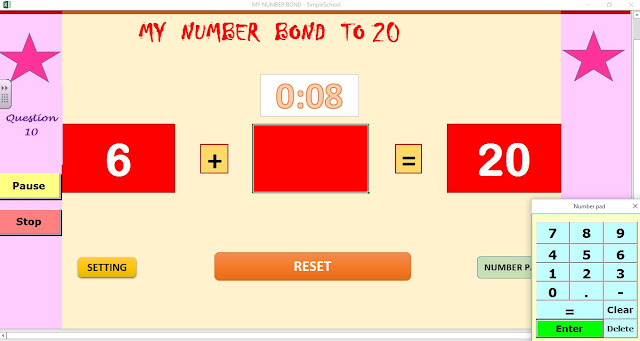| AGGREGATE | Returns an aggregate in a list or database. Replaces SUBTOTAL. |
| BETA.DIST | Returns the cumulative beta probability density function. Replaces BETADIST. |
| BETA.INV | Returns the inverse of the cumulative beta probability density function. Replaces BETAINV. |
| BINOM.DIST | Returns the individual term binomial distribution probability. Replaces BINOMDIST. |
| BINOM.INV | Returns the smallest number which is the cumulative binomial distribution that is greater than a criterion value. Replaces CRITBINOM. |
| CEILING.PRECISE | Rounds a number the nearest integer or to the nearest multiple of significance. Regardless of the sign of the number, the number is rounded up. |
| CHISQ.DIST | Returns the cumulative beta probability density function. |
| CHISQ.DIST.RT | Returns the one tailed probability of the chi-squared distribution. Replaces CHIDIST. |
| CHISQ.INV | Returns the random variable where the probability of getting 'less than' it is P. |
| CHISQ.INV.RT | Returns the inverse of the one tailed probability of the chi-squared distribution. Replaces CHIINV. |
| CHISQ.TEST | Returns the value from the chi-squared distribution. Replaces CHITEST. |
| CONFIDENCE.NORM | Returns the confidence interval for a population mean. Replaces CONFIDENCE. |
| CONFIDENCE.T | Returns the confidence interval for a population mean, using a Student's t distribution. |
| COVARIANCE.P | Returns the covariance of two lists of numbers. Replaces COVAR. |
| COVARIANCE.S | Returns the sample covariance, the average of the products deviations for each data point pair in two data sets. |
| ERF.PRECISE | Returns the error function. |
| ERFC.PRECISE | Returns the complementary ERF function integrated between x and infinity. |
| EXPON.DIST | Returns the exponential distribution. Replaces EXPONDIST. |
| F.DIST | Returns the F probability distribution. |
| F.DIST.RT | Returns the F probability distribution. Replaces FDIST. |
| F.INV | Returns the inverse of the F probability distribution. |
| F.INV.RT | Returns the inverse of the F probability distribution. Replaces FINV. |
| F.TEST | Returns the result of an F-test. Replaces FTEST. |
| FLOOR.PRECISE | Rounds a number the nearest integer or to the nearest multiple of significance. Regardless of the sign of the number, the number is rounded up. |
| GAMMA.DIST | Returns the gamma distribution. Replaces GAMMADIST. |
| GAMMA.INV | Returns the inverse of the gamma distribution. Replaces GAMMAINV. |
| GAMMALN.PRECISE | Returns the natural logarithm of the gamma function, G(x). |
| HYPGEOM.DIST | Returns the hyper geometric distribution for a finite population. Replaces HYPGEOMDIST. |
| ISO.CEILING | Rounds a number up to the nearest integer or to the nearest multiple of significance. |
| LOGNORM.DIST | Returns the cumulative lognormal distribution of x, where ln(x) is normally distributed with parameters mean and standard_dev. Replaces LOGNORMDIST. |
| LOGNORM.INV | Returns the inverse of the lognormal cumulative distribution function of x, where ln(x) is normally distributed with parameters mean and standard_dev. Replaces LOGINV. |
| MODE.MULT | Returns a vertical array of the most frequently occurring, or repetitive values in an array or range of data. |
| MODE.SNGL | Returns the number that occurs most frequently in a range. Replaces MODE. |
| NEGBINOM.DIST | Returns the negative binomial distribution. Replaces NEGBINOMDIST. |
| NETWORKDAYS.INTL | Returns the number of whole workdays between two dates using parameters to indicate which and how many days are weekend days. Replaces NETWORKDAYS. |
| NORM.DIST | Returns the normal cumulative distribution. Replaces NORMDIST. |
| NORM.INV | Returns the inverse of the normal cumulative distribution. Replaces NORMINV. |
| NORM.S.DIST | Returns the standard normal cumulative distribution. Replaces NORMSDIST. |
| NORM.S.INV | Returns the inverse of the standard normal cumulative distribution. Replaces NORMSINV. |
| PERCENTILE.EXC | Returns the Kth percentile of values in a range, where k is in the range 0..1, exclusive. |
| PERCENTILE.INC | The Kth percentile of values in an array of numbers. Replaces PERCENTILE. |
| PERCENTRANK.EXC | Returns the rank of a value in a data set as a percentage (0..1, exclusive) of the data set. |
| PERCENTRANK.INC | Returns the rank of a value in a data set as a percentage of the data set. Replaces PERCENTRANK. |
| POISSON.DIST | Returns the Poisson distribution. Replaces POISSON. |
| QUARTILE.EXC | Returns the quartile of the data set, based on percentile values from 0..1, exclusive. |
| QUARTILE.INC | Returns the quartile of a data set. Replaces QUARTILE. |
| RANK.AVG | Returns the rank of a number in a list of numbers: its size relative to other values in the list; if more than one value has the same rank, the average rank is returned. |
| RANK.EQ | Returns the rank of a number in a list of numbers. Replaces RANK. |
| STDEV.P | Returns the standard deviation based on the entire population. Replaces STDEVP. |
| STDEV.S | Returns the standard deviation based on a sample. Replaces STDEV. |
| T.DIST | Returns the Percentage Points (probability) for the Student's t-distribution. |
| T.DIST.2T | Returns the two-tailed Student's t-distribution. Replaces TDIST. |
| T.DIST.RT | Returns the right-tailed Student's t-distribution. Replaces TDIST. |
| T.INV | Returns the T-value of the Student's t-distribution as a function of the probability and the degrees of freedom. |
| T.INV.2T | Returns the t-value of the Student's t-distribution as a function of the probability and the degrees of freedom. Replaces TINV. |
| T.TEST | Returns the probability associated with the F-Test. Replaces TTEST. |
| VAR.P | Returns the variance based on the entire population. Replaces VARP. |
| VAR.S | Returns the variance based on a sample. Replaces VAR. |
| WEIBULL.DIST | Returns the Weibull distribution. Replaces WEIBULL. |
| WORKDAY.INTL | Returns the serial number that is a given number of days before or after a date. Replaces WORKDAY. |
| Z.TEST | Returns the two-tailed P-value of a z-test. Replaces ZTEST. |










Comments
Post a Comment